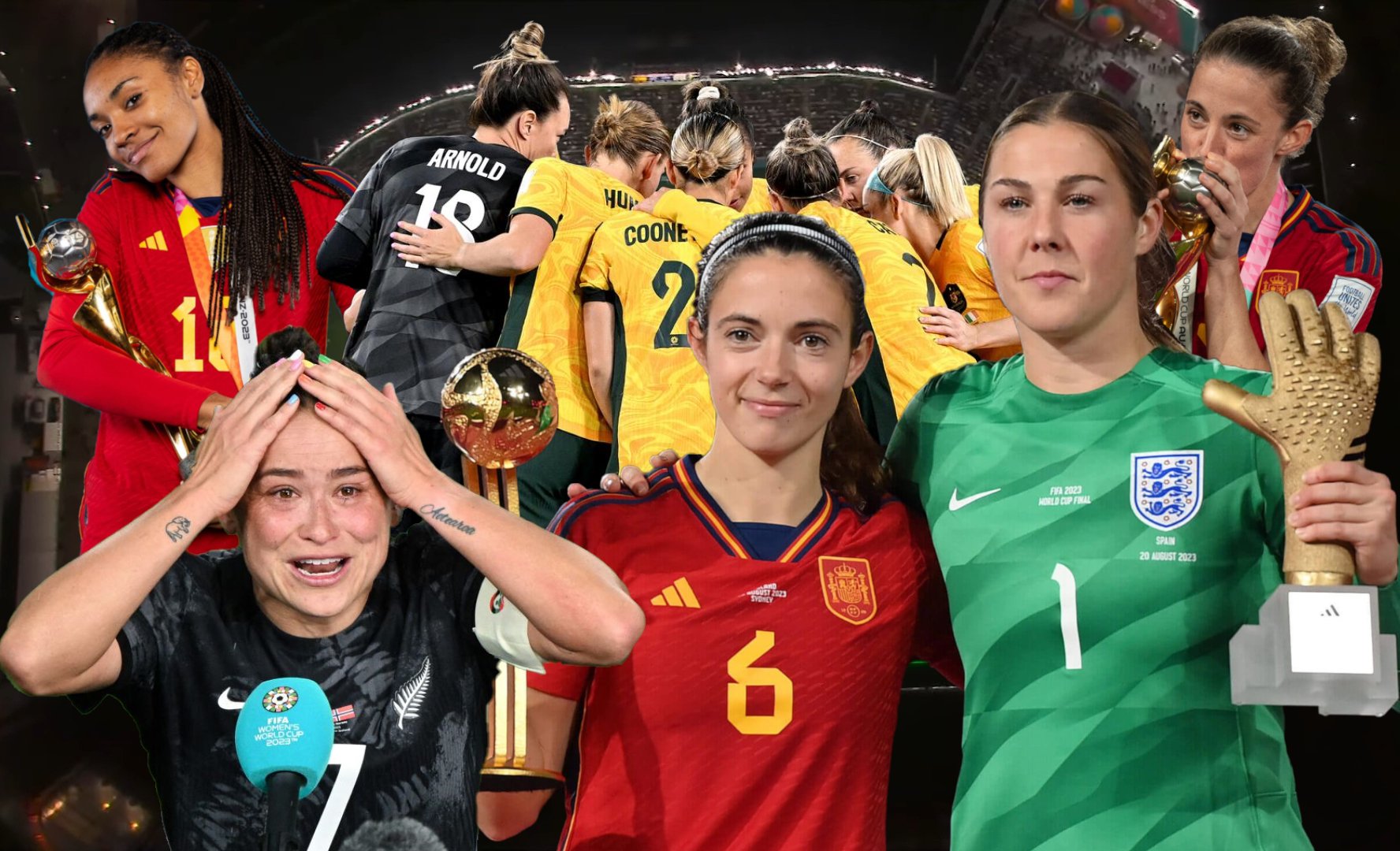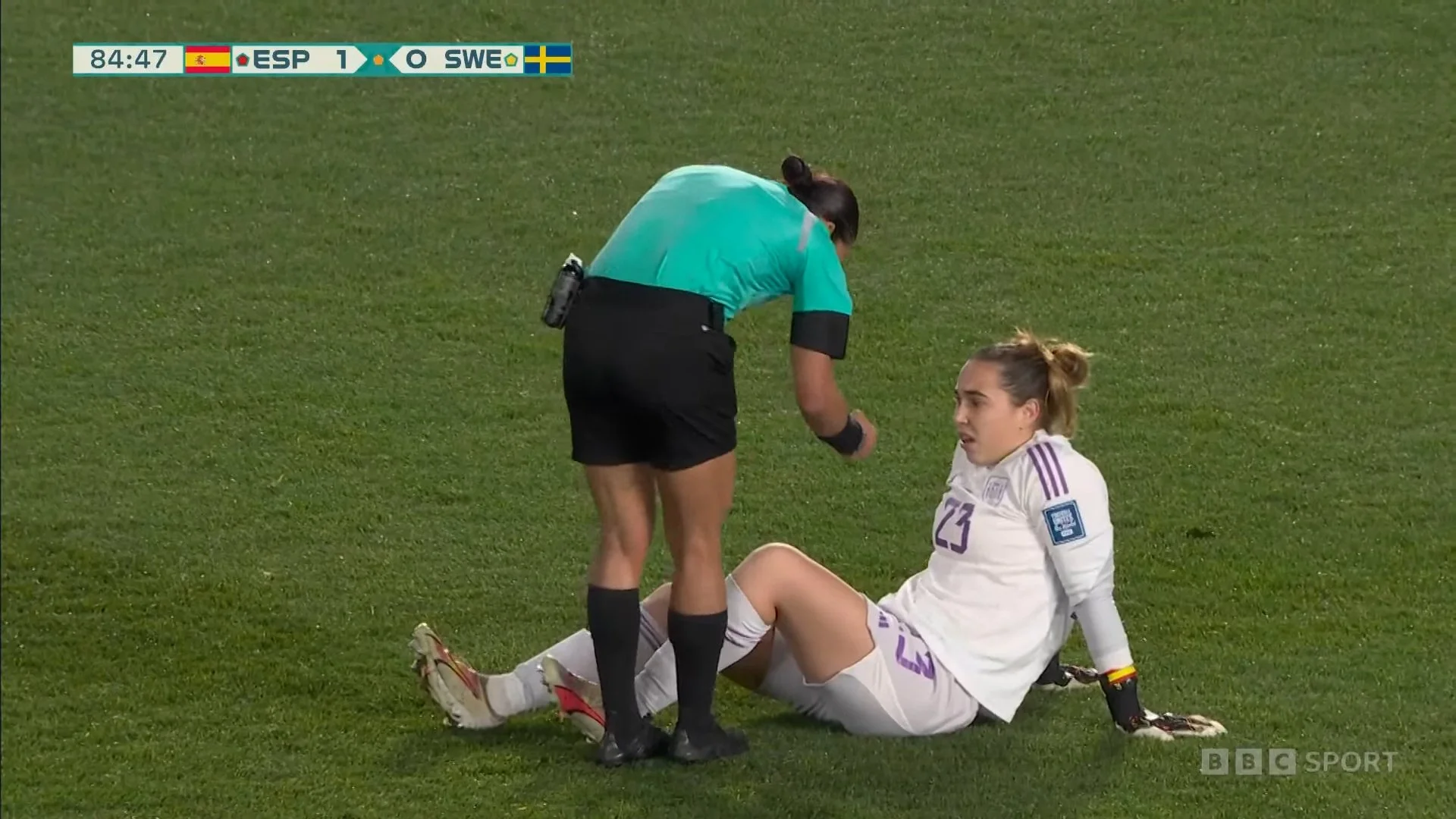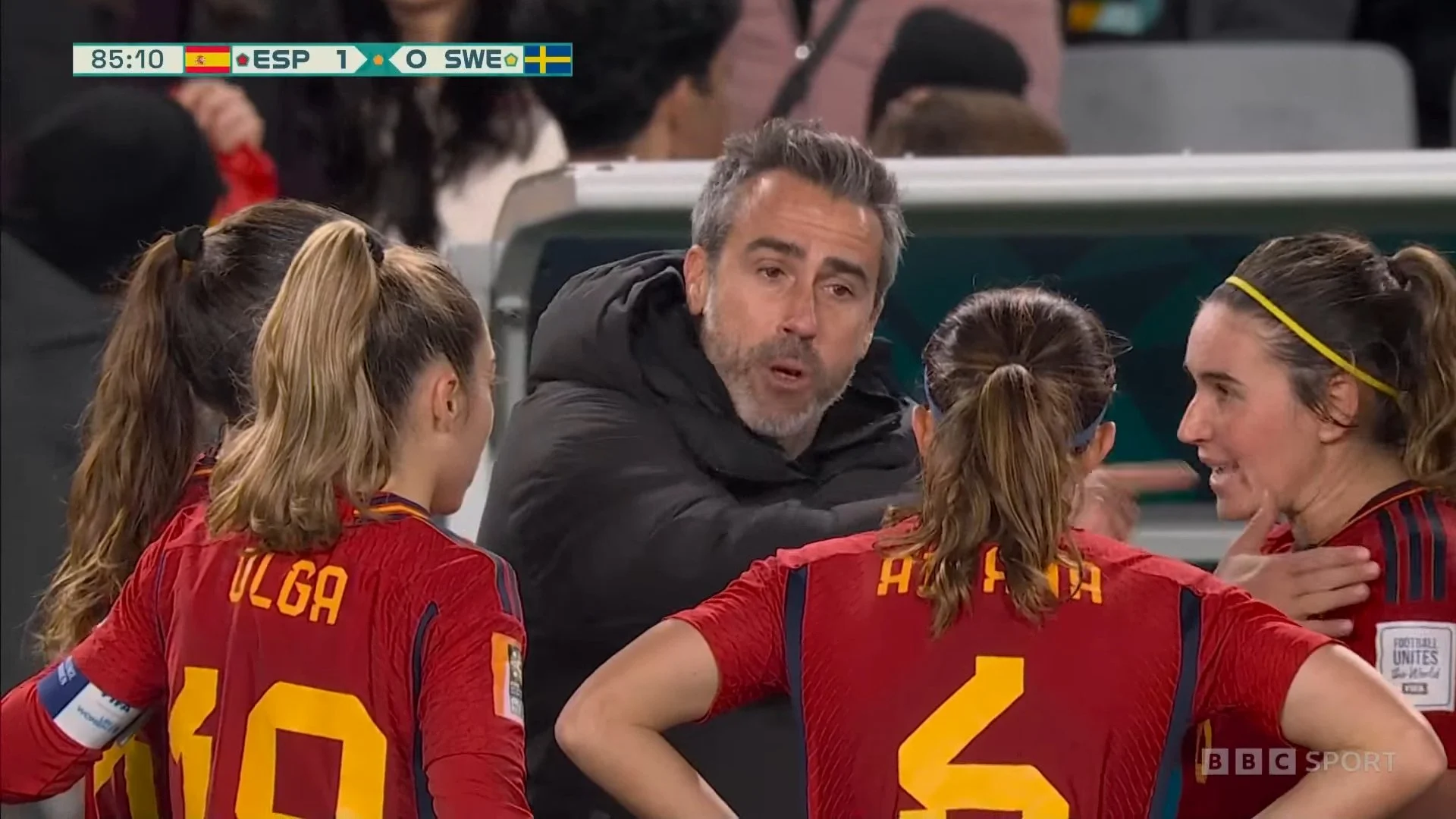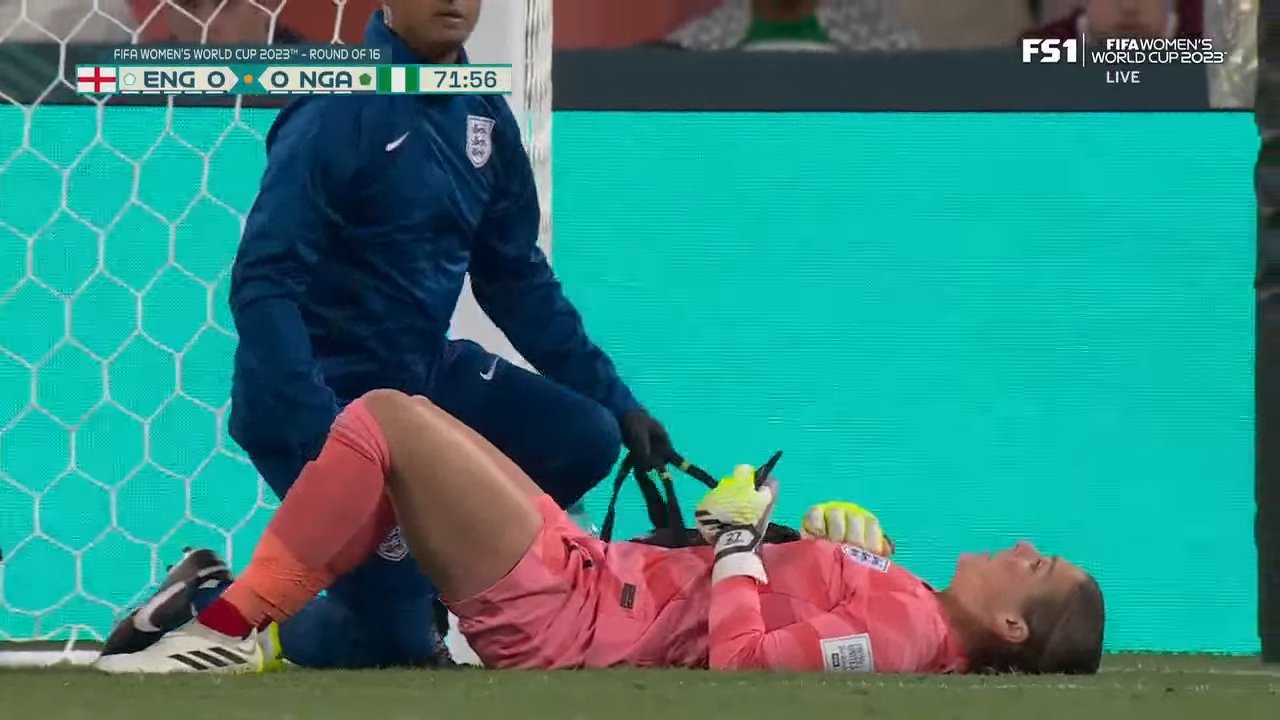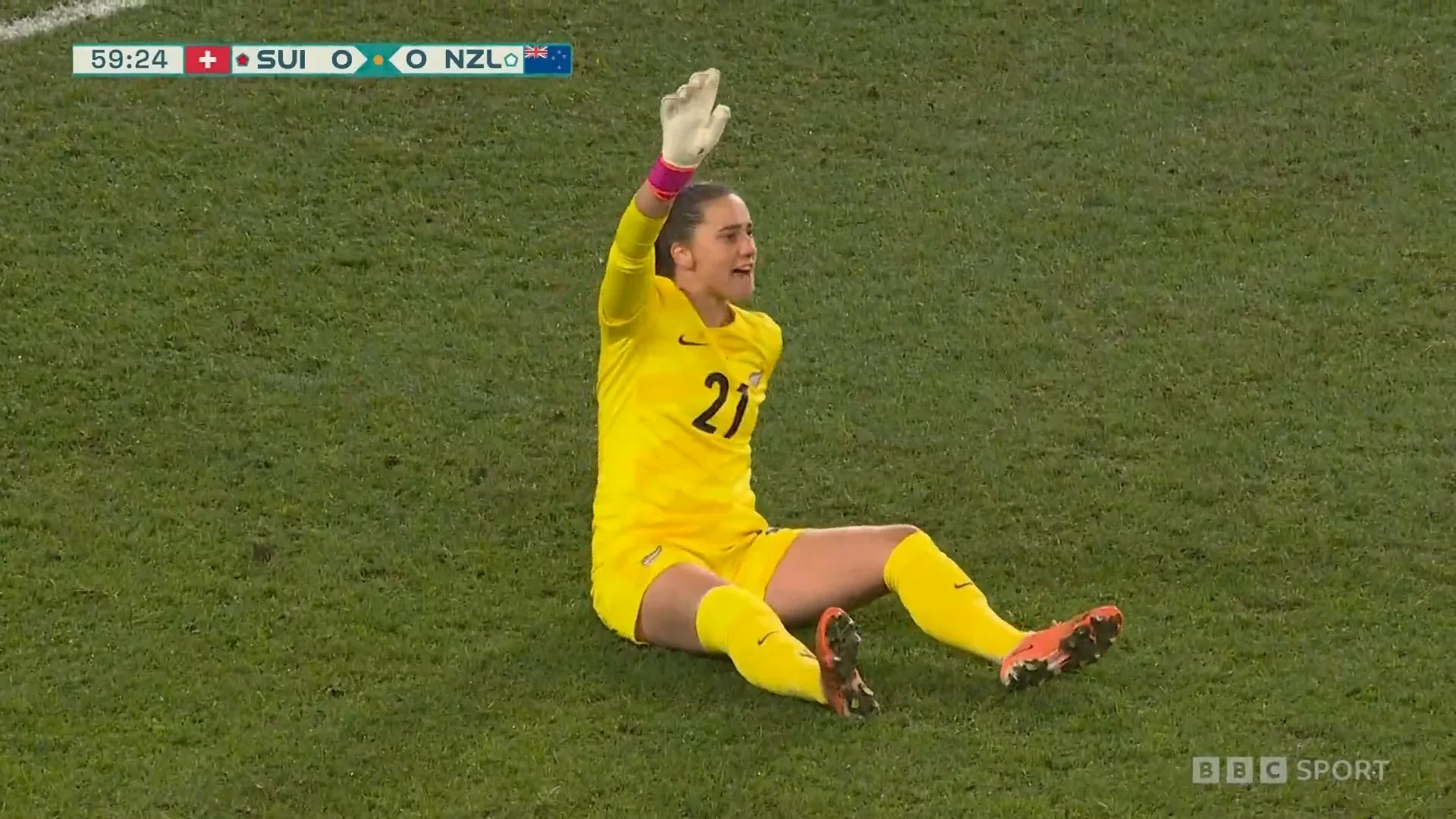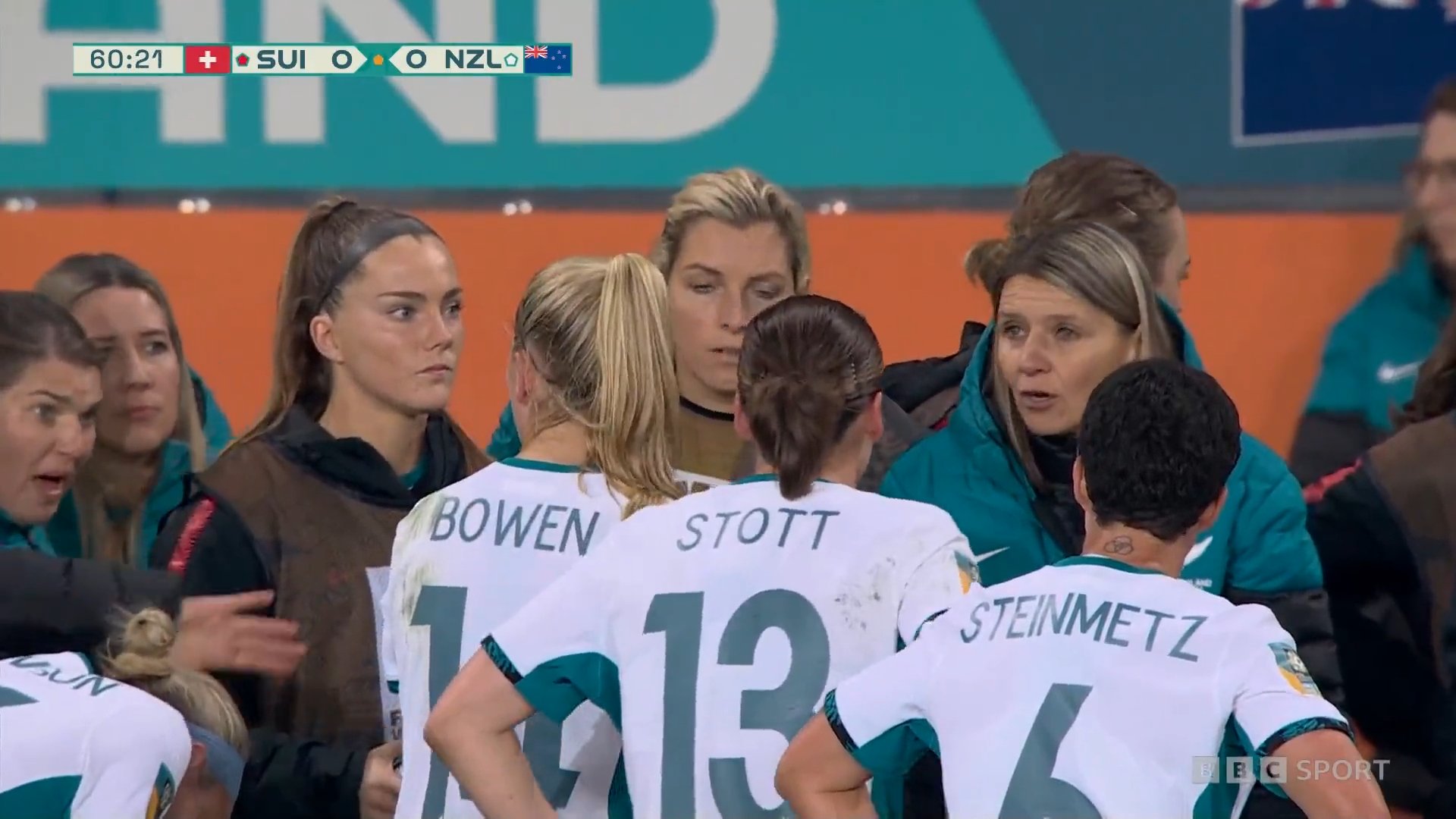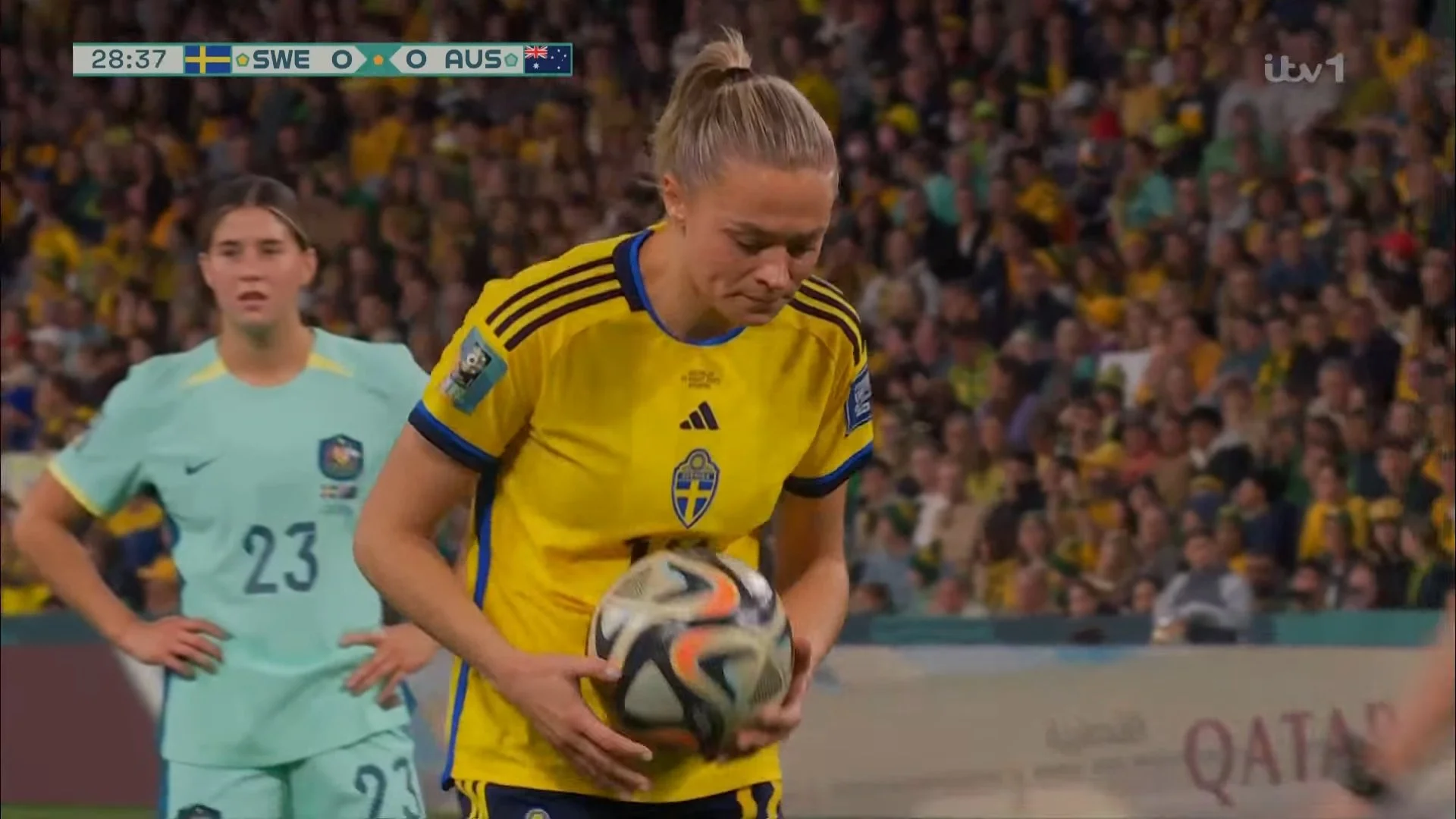Thoughts And Reflections From The 2023 FIFA Women’s World Cup
Que Viva España
They were the worthiest champions. Dominant against the weaker teams and efficient against their fellow challengers. Spain delivered a clinic in possession-based football, built around an incredible midfield and a couple of superbly aggressive fullbacks. There was that one stumble in the group stage when Japan dealt them a 4-0 defeat with a perfectly executed counter-attacking performance but only the Japanese were capable of such precision. La Roja recovered from that stumble with the same resilience they subsequently showed throughout the knockouts – twice conceding late equalisers and twice scoring even later winners (in extra time against Netherlands in the quarters, then late in regulars against Sweden in the semi).
It doesn’t take a mastermind to spot the influence of Barcelona upon this team’s style. Barca have won two of the last three Champions Leagues and were runners-up in the other one – the only club that’s been able to break Olympique Lyon’s dominance throughout the past decade. That’s where the spine of this team comes from. Centre back Irene Paredes. Midfielders Aitana Bonmati and Alexia Putellas. Forwards Salma Paralluelo and Mariona Caldentey. Goalie Cata Coll didn’t start the tournament (nor did she start for Barca in the UCL final) but she was excellent after being promoted to the starting team after the Japan loss. And this is before right back Ona Batlle joins Barca next season.
That continuity between club and country was massive because it hasn’t been smooth sailing to get here. You’ve surely heard about that whole drama between the players and team management, a situation which came to a head last year when 15 of their top players boycotted the team with demands for better support/treatment/conditions. There aren’t a heap of details available to the public so it’s a tricky one to talk about... but from what’s been discussed it sounds like a high-performance problem. Spanish national team camps were being run like bootcamps with players given scant freedoms on tour (the one that always gets mentioned is how they weren’t allowed to lock their hotel doors at night so that a member of the management could check that they hadn’t broken curfew). They were expected to play through injuries. There was favouritism with selections. Chuck in some subpar training methods and it was all too much for some players.
It’s been portrayed as a problem with the coach but that’s not fully accurate. Coach Jorge Vilda is part of the problem but it goes much higher up the chain of command. The letter that was sent to the FA never actually asked for Vilda to be sacked – it only asked for more professional working conditions. But of course the national body shrugged it off, backed the coach, who then stopped picking those players. And such is the depth of Spanish football right now that they kept on winning without them.
Some have since come back into the squad – including a couple of those Barca players who were seemingly the instigators of the mutiny (makes sense given they’re coming from the highest club standards). Many others have not. Mapi Leon (centre-back), Sandra Paños (goalkeeper), and Patricia Guijarro (midfielder) all started for Barca in the latest UCLW final while Claudia Pina (forward) played off the bench. They weren’t at this World Cup. Neither were Manchester City’s Leila Ouahabi and Laia Aleixandri.
(Those that did come back from Las 15: Batlle, Bonmati & Caldentey, while Alexia Putellas was an unofficial member of the group but was injured at the time of the boycott while Jenni Hermoso didn’t sign the letter but did voice her support for the cause. Several others made themselves available but weren’t selected).
England were missing several key players of their own during this World Cup. Leah Williamson, Beth Mead, and Fran Kirby are all absent with long term injuries while the retirement of Ellen White meant they were down four starters from the 2022 European Championships final (plus the retired Jill Scott who was an important bench contributor). Wild to think that the two best teams on the planet are normally even better than this.
Back to Spain, like most things that we first hear about via social media... it’s more complicated that it’s being portrayed. Isolating Vilda as a Bad Man is missing the greater point of the Spanish FA treating its women’s team like an afterthought. Fair play to Vilda who did make some decent substitutions along the way and the line-up change with goalkeeper Coll proved inspired... but it’s not a lie to say that he relies heavily on that Barcelona spine for his team’s tactical efforts. He’s an underqualified coach who compensates by imposing strict measures of control and probably should’ve been fired last year when the dramas happened. His emboldened nationalistic moralising ever since has been embarrassing; this hombre even demanded apologies from the exiled players before they’d be accepted back. But the deeper issue is that he never should’ve been hired in the first place. All of which acquires more clarity when you learn that Vilda’s father, Angel Vilda, is a man of heavy influence in the Spanish FA.
We don’t know all the ins and outs. The team has been very careful to keep things on topic throughout this tournament (Vilda gave it the ol’ “next question please” when asked at his pre-final press conference) and there have definitely been improvements since Las 15 happened, players have admitted as much. It might not be all the way there yet but it was enough to entice a few outlaws back into the mix and their bargaining power will never be greater than it is right now as the darlings of the nation. The President of the Spanish FA sure enjoyed himself during the presentation so you’d hope he’d be receptive to a few suggestions.
Throughout all their celebrations one thing was abundantly clear though: this Spanish team do not like Jorge Vilda. After both the semi and the final you could see two distinct zones of celebration, one for the players on the pitch and one for the management by the dugout. This was after that video of players outright ignoring Vilda immediately following the quarter-final win so it had to be a deliberate thing. Players also tended not to shake his hand after being subbed. They didn’t seem to pay much attention to his advice. There were clues everywhere. It’s reductive to say that they won despite their coach but it’s also true that this victory belongs to those players, not him.
Those Glorious Crowds
Remember right before the World Cup started when folks were worried about ticket sales? We had FIFA dropping some big hints with statements that may as well have read: “no need to panic, but...”. We had the Minister For Sport telling folks to get a move on. There was the constant negative comparison to Australia’s chunkier numbers, apparently forgetting about their much bigger stadiums. Not to mention an annoying amount of media coverage wondering: Why aren’t Kiwis as excited as they should be?
Look, if you want people to get excited then don’t nag them about it. Show them your excitement, and the excitement of others, and let the vibe become contagious. More media focus on the hype that did exist rather than the hype that didn’t would’ve eased those worries in a hurry. But it turns out there was nothing to worry about in the first place. The Football Ferns got the ball rolling with a legendary win and the momentum was unstoppable from there.
Earlier this year, the USA dropped by for two friendlies and drew what were then the two highest ever crowds for a women’s international in Aoteaora. We’re talking 12,508 in Wellington followed by 12,721 in Auckland. Well, there were 29 matches in NZ during this World Cup and 22 of them had attendances above those numbers (the other seven were all in the smaller venues of Dunedin and Hamilton). The average crowd across the NZ games was over 24k, nearly double the previous high.
| Games | High | Low | Average | Cumulative | |
|---|---|---|---|---|---|
| Auckland | 9 | 43,217 | 20,983 | 38,047 | 342,422 |
| Hamilton | 5 | 17,907 | 6,645 | 11,910 | 59,549 |
| Wellington | 9 | 33,042 | 14,967 | 25,676 | 231,082 |
| Dunedin | 6 | 25,947 | 6,992 | 12,615 | 75,690 |
| Groups | 24 | 42,958 | 6,645 | 21,418 | 514,029 |
| Knockouts | 5 | 43,217 | 32,021 | 38,943 | 194,714 |
| Monday | 3 | 30,889 | 8,117 | 19,988 | 59,963 |
| Tuesday | 5 | 43,217 | 8,215 | 27,503 | 137,516 |
| Wednesday | 4 | 20,983 | 6,992 | 15,212 | 60,849 |
| Thursday | 3 | 42,137 | 6,645 | 25,365 | 76,094 |
| Friday | 5 | 43,217 | 8,834 | 24,150 | 120,749 |
| Saturday | 5 | 43,217 | 16,111 | 32,524 | 162,620 |
| Sunday | 4 | 34,697 | 11,991 | 22,738 | 90,952 |
| Before 7pm | 19 | 43,217 | 6,992 | 23,947 | 454,986 |
| After 7pm | 10 | 43,217 | 6,645 | 25,476 | 254,757 |
| TOTAL | 29 | 43,217 | 6,645 | 24,439 | 708,743 |
Eden Park’s three knockout games, none of which involved the home team by the way, were all sellouts of 43,217 people which ties them for the biggest ever crowd for a football game in Aotearoa. Men’s or women’s. Domestic or international. Any game. That used to belong to the All Whites vs Peru with a cool 37,304 who rocked up to witness that intercontinental men’s World Cup qualifier in 2017. Six separate games topped that tally during this tournament.
In total more than 700,000 fans parked themselves at those New Zealand games. To watch women’s football. Only three of those games involved New Zealand but that didn’t stop us, did it? In the midst of a chilly winter. With many of those games on weekdays. Absolutely incredible.
| DATE | DAY | KO | VENUE | CROWD | |||||
|---|---|---|---|---|---|---|---|---|---|
| 20/07/23 | Thursday | 7pm | A | New Zealand | 1 | 0 | Norway | Auckland | 42,137 |
| 21/07/23 | Friday | 5pm | A | Philippines | 0 | 2 | Switzerland | Dunedin | 13,711 |
| 21/07/23 | Friday | 7.30pm | C | Spain | 3 | 0 | Costa Rica | Wellington | 22,966 |
| 22/07/23 | Saturday | 7pm | C | Zambia | 0 | 5 | Japan | Hamilton | 16,111 |
| 22/07/23 | Saturday | 1pm | E | USA | 3 | 0 | Vietnam | Auckland | 41,107 |
| 23/07/23 | Sunday | 7.30pm | E | Netherlands | 1 | 0 | Portugal | Dunedin | 11,991 |
| 23/07/23 | Sunday | 5pm | G | Sweden | 2 | 1 | South Africa | Wellington | 18,317 |
| 24/07/23 | Monday | 6pm | G | Italy | 1 | 0 | Argentina | Auckland | 30,889 |
| 25/07/23 | Tuesday | 5.30pm | A | New Zealand | 0 | 1 | Philippines | Wellington | 32,357 |
| 25/07/23 | Tuesday | 8pm | A | Switzerland | 0 | 0 | Norway | Hamilton | 10,769 |
| 26/07/23 | Wednesday | 5pm | C | Japan | 2 | 0 | Costa Rica | Dunedin | 6,992 |
| 26/07/23 | Wednesday | 7.30pm | C | Spain | 5 | 0 | Zambia | Auckland | 20,983 |
| 27/07/23 | Thursday | 1pm | E | USA | 1 | 1 | Netherlands | Wellington | 27,312 |
| 27/07/23 | Thursday | 7.30pm | E | Portugal | 2 | 0 | Vietnam | Hamilton | 6,645 |
| 28/07/23 | Friday | 12pm | G | Argentina | 2 | 2 | South Africa | Dunedin | 8,834 |
| 29/07/23 | Saturday | 7.30pm | G | Sweden | 5 | 0 | Italy | Wellington | 29,143 |
| 30/07/23 | Sunday | 7pm | A | Switzerland | 0 | 0 | New Zealand | Dunedin | 25,947 |
| 30/07/23 | Sunday | 7pm | A | Norway | 6 | 0 | Philippines | Auckland | 34,697 |
| 31/07/23 | Monday | 7pm | C | Japan | 4 | 0 | Spain | Wellington | 20,957 |
| 31/07/23 | Monday | 7pm | C | Costa Rica | 1 | 3 | Zambia | Hamilton | 8,117 |
| 01/08/23 | Tuesday | 7pm | E | Portugal | 0 | 0 | USA | Auckland | 42,958 |
| 01/08/23 | Tuesday | 7pm | E | Vietnam | 0 | 7 | Netherlands | Dunedin | 8,215 |
| 02/08/23 | Wednesday | 7pm | G | Argentina | 0 | 2 | Sweden | Hamilton | 17,907 |
| 02/08/23 | Wednesday | 7pm | G | South Africa | 3 | 2 | Italy | Wellington | 14,967 |
| 05/08/23 | Saturday | 5pm | R16 | Switzerland | 1 | 5 | Spain | Auckland | 43,217 |
| 05/08/23 | Saturday | 8pm | R16 | Japan | 3 | 1 | Norway | Wellington | 33,042 |
| 11/08/23 | Friday | 1pm | QF | Spain (aet) | 2 | 1 | Netherlands | Wellington | 32,021 |
| 11/08/23 | Friday | 7.30pm | QF | Japan | 1 | 2 | Sweden | Auckland | 43,217 |
| 15/08/23 | Tuesday | 8pm | SF | Spain | 2 | 1 | Sweden | Auckland | 43,217 |
Three More Spanish Notes
Spain’s abundance of talent goes far beyond being able to cover for a dozen of their best players being unavailable. As well as having the best club team in Europe (therefore potentially the best club team on earth), they’re also the reigning champions of the U20 World Cup and two-time reigning champions of the U18 World Cup. In fact the 2018 U17 World Cup team that started the trend – which featured Cata Coll, Salma Parallueles, and Eva Navarro – was the one where New Zealand finished third. Spain beat the NZers 2-0 in the semi-final. The only other instance in history of a team holding the U17, U20 & Senior World Cup titles in the same gender all at once was the Brazilian men between 2003-2005. And remember both age grade tourneys had one wave cancelled due to covid within that span too. Special mention to Salma Parallueles who is the only Spanish player to have won at all three of those levels.
Spain now join Germany as the only nations to have lifted both the Women’s and Men’s FIFA World Cup. That was going to be the case either way with England also a previous MWC champion (shout out to the 1966 legends – of which only Sir Bobby Charlton and Sir Geoff Hurst are still alive from that starting eleven). But England’s foreign coach did leave another historical trend up for grabs. Had the Lionesses won then Sarina Wiegman would’ve become the first coach to ever win a World Cup (again, men or women) coaching a nation other than their own. It’s never happened... and it’s still never happened. Say what you will about Jorge Vilda but there’s no denying one thing: he’s Spanish. There is a slight technicality over Jill Ellis who was born in England... but she became a naturalised American decades before she coached them to back to back world titles.
Finally, a word in honour of the fine township of Palmerston North. There was a minor international incident when a report emerged that the Spanish side, who’d had their training base there, had found it a boring place to stay and were happy to leave. Knowing what we know about Spanish national team camps it could just be that they weren’t allowed out of the hotel to experience any of the local attractions (surely the country that gave us Don Quixote would appreciate a good windmill). Or maybe Palmy town square simply wasn’t big enough for them. Who knows. But ‘boring’ might not be the worst thing when there’s a World Cup to be won because Massey Sport Institute and the Copthorne Hotel can always now boast that they hosted the champions of the world.
The Rise Of The So-Called Minnows
Every World Cup gets talked about as the biggest one yet. The last two really feel like the ones where women’s football exploded into the mainstream though (aided by an England Euros win in between, sure). 2019 saw the emergence of genuine professionalism amongst the top teams. 2023 began to spread that around to everyone else. One of the major talking points leading into the WC was whether the women’s international game was deep enough to handle the expansion to 32 teams... mate, not only were there very few of the massive hidings that were predicted (it ended up being the lowest scoring World Cup ever in terms of goals per game) but we even got upset results and unexpected nations in the knockouts.
New Zealand began the trend with our first ever World Cup win in the opening match against Norway. That was only the beginning. The Philippines beat NZ for their first win in their first tournament. They were one of eight debutant nations – including Morocco who progressed all the way to the knockouts after beating South Korea and, incredibly, Germany. Another debutant, Portugal, were a post’s width away from knocking defending champs USA out in the group stages. Three African nations made the round of sixteen: Morocco, South Africa, and Nigeria. There had previously only been four Women’s World Cup knockout games in history featuring an African team. Jamaica got to the sixteens as well which makes them the first CONCACAF nation other than USA and Canada to get that far. And while Brazil, for so long the torch-bearers of South American women’s footy, were dumped out in the groups... Colombia took it all the way to the quarters. None of the semi-finalists were previous champions. Expectations were dashed. Rankings were made irrelevant.
If you’ve read the Football Ferns specific post-WC yarn then you that most of this growth is down to club football. Over the past few years we’ve finally seen the top men’s clubs – aka the richest teams in the world – begin to give a damn about their women’s teams and with such hefty organisations even small pittances of their annual income being delegated to the ladies is still huge money. It’s the daily environment of being a professional footballer that brings out the best in players. Already mentioned how much credit Barcelona deserve for Spain’s triumph. Clubs like Chelsea, Manchester City, and Arsenal have set a standard in the English game that challenges others to rise up. Players are getting better with better opportunities. Better players make for better national teams.
In 2019 that delivered us these quarter-finalists: Norway, England, France, USA, Italy, Netherlands, Germany, and Sweden. In other words, the eight strongest and most invested-in (largely via their proximity to men’s football) leagues in the world... with the exception of Spain who were bounced by the USA in the R16 – although Real Madrid’s women’s team didn’t arrive until 2020 so maybe the original point still stands. Seven European teams plus the USA. Money was growing the game but only in a rich-get-richer kinda way.
Four years later only four of those teams made it back to the quarters, with two Asian teams (Japan & Australia) and a South American side (Colombia) joining them and Spain. What’s changed over the intervening period? It’s pretty simple. Those clubs have continued to grow and as they’ve continued to grow they’ve begun signing players from all over the globe. The 16 biggest transfer fees ever paid for women have all happened since 2020. Chelsea’s women’s team is just as multi-national as their men’s team, for example. The English Women’s Super League supplied more World Cup players than any other domestic league with 106 in total. 20 of those were in the England squad and 86 of them were not. Only 5/16 of Chelsea’s World Cup players were in the England squad. You get the idea.
The Fall of the USWNT
First of all: lol.
Second of all: that trend of worldwide growth isn’t very encouraging for the future dominance of the American team. The USA has never had an excess of tactical genius players, their whole thing has been that they’re the best athletes with the most infallible mentality and also probably the most well-funded international programme. They always won because they’re stronger, faster, fitter, and because they believed unequivocally that they would.
Now that other nations are catching up to them in those areas, and also incorporating far more sophisticated tactical set-ups – from Spain’s sublime technical possession stuff to the way that teams like Japan and Sweden squeezed every last drop of potential out of their squad with flawlessly organised gameplans – it kinda feels like America might be a little more than one good coaching hire away from restoring past glories as their fans seem to think.
We saw it rather starkly against Portugal in the group stage where a box midfield and a low block were too much for their team to break down. Then in a much improved performance against Sweden in the knockouts they still got blanked before going out on penalties as their technique and belief abandoned them when it mattered most. A fitting snapshot of a footballing empire in decline.
There are some superb young players in that US squad who’ll carry them for years to come. Naomi Girma was a revelation at centre-back while Sophia Smith and Trinity Rodman will score bundles of international goals. The NWSL remains one of the best leagues in the world. But whereas there’s already structure, facilities, and resource in place for big European clubs/leagues to keep growing far beyond where they already are – thanks to their proximity to men’s footy – that’s not the case in America. The MLS is fine but it’s hardly out there setting standards. The USA has long struggled to bring its immense women’s national team fandom over to their domestic offerings and, honestly, the college system isn’t exactly helping them either. None of this is beyond repair, not by a long shot, but yeah not too sure if the American Soccer authorities can be trusted to solve this riddle by themselves. Oh well that’s their problem.
The Goalkeeper’s Timeout
World Cups are always great for new footballing trends. The 2022 Men’s version served up the bloated injury time trend which is now getting picked up at club level too. Black gloves must already flying off the shelves across Australia as kids emulate Mary Fowler (sure beats the emulators of Ronaldo’s silly triangle haircut in 2002). Also the stage is what determines the influence so, while they weren’t the first to do this, whenever a team makes a goalkeeping substitution just prior to a penalty shootout – like France did against Australia in the WWC quarter-final - it’s hard not to think of Louis van Gaal doing the same thing with his Netherlands team against Costa Rica at the 2018 MWC.
We’re talking about official trends, player trends, and tactical trends alike. And one of the 2023 World Cup’s finest offerings to that cause: The Goalkeeper’s Timeout.
Under the current laws of the game an injured player must leave the field to receive treatment. The game may briefly stop for them, particularly if there’s a head injury, but then they’re supposed to leave the pitch so that the match can continue. Very serious injuries are an exception. It’s also true that you don’t have to go off if you were injured by a foul that was deemed worthy of a yellow or red card. If you’ve just won a penalty and are the designated taker then you’re allowed to have the physio check you out. And goalkeepers get an exception too.
Hence we’ve had several instances throughout this tournament where a goalie has hit the deck with a minor injury, usually within the last twenty minutes of a close game, and the game has stopped while the physio does their thing. Meanwhile the rest of the players get to huddle up and have a wee chat about things before the goalie is inevitably cleared to continue
It happened in the 85th minute of the semi-final between Spain and Sweden. Spain had just scored to take the lead but Sweden had been threatening an equaliser through those pesky set pieces. Suddenly goalie Catalina Coll was in suspicious need of medical assistance right when the Spanish side probably needed a moment to collect themselves. It didn’t work because they conceded within a minute of the game resuming... but the intention was clear. While Coll was down, the entire rest of the team was circled up around the coach getting instructions (another example of Vilda’s poor coaching lol).
It happened in the England vs Nigeria game. It was 0-0 with a little under twenty mins left, England having struggled to break down a dogged Nigerian defence. Mary Earps had just watched a header from a corner fly comfortably wide of her goal and then all of a sudden she was calling for the trainer. Earps hoovered down one of those gel pack things – liquid energy! - and was good to go. Meanwhile the rest of her team, lo and behold, were gathered around the English technical area grabbing a drink and discussing tactics. England eventually won on penalties.
Two is a coincidence, three makes the trend. So guess what? New Zealand did it too. It was the third group game against Switzerland and the game was tied at nil-all with the Footy Ferns well aware that they almost certainly needed to win the match. 60 minutes had elapsed and they’d just had a bit of a shaky spell and needed to calm things down. Vic Esson took a seat and summoned the ref’s attention. Game paused. Teammates got a breather, a mental reset, and a chance to spread a few ideas.
In fairness to Esson, at least hers happened moments after she’d surged off her line to clear a ball over the top. Plus she already had her kicking knee strapped so unlike the other two examples this one wasn’t entiiiirely fabricated. But then it’s not like the physios did anything other than talk and offer a water bottle. We know what Vic was up to there. And it was exactly what the Ferns needed from one of their on-field leaders. They went on to have the better of the last half hour, albeit without finding the winning goal they were after.
Penalty Shenanigans
A quick one on top of that last one... we had several instances during the tournament where a penalty was awarded and the other team got creative with their distraction tactics. England did it brilliantly to put Jenni Hermoso off kilter with her spot kick in the final. You had Lucy Bronze standing on the spot for way longer than she should have been allowed to, then Bronze also led the complaints about the ball not being on the spot. Not to mention Mary Earps and her steely eyes in goal.
Earps saved that effort like a champion. It was touch and go with whether she left her line early but VAR did check and clear it. Reasoning seems to be that her foot was above the line but still shadowing it. Apparently that’s allowed. They change these things all the time so it’s hard to keep up.
Flash back to the night previous and you had a smooth example of how to combat such mindgames. Sweden were given a (dodgy) spot kick midway through the first half of the third-place game against Australia. It took a long VAR review to award it, after which the parochial crowd made their opinions known while the Aussie players pleaded in vain themselves. It was a long wait before they actually got to take it.
As this was happening, Filippa Angeldahl picked the ball up and walked over to the spot. She stood with the ball for around twenty seconds as the ref talked to the keeper and the fans booed and jeered. Then she handed the ball to Fridolina Rolfö who placed it and took it and scored it herself. Solidarity between teammates, sharing the burden, making the task as uncomplicated as possible for the taker. They knew exactly what they were doing and it worked out beautifully.
Team of the Tournament
GK – Mary Earps (England)
RB – Ona Batlle (Spain)
CB – Amanda Ilestedt (Sweden)
CB – Alex Greenwood (England)
LB – Olga Carmona (Spain)
CM – Teresa Abelleira (Spain)
CM – Aitana Bonmati (Spain)
CM – Elin Rubensson (Sweden)
RW – Hinata Miyazawa (Japan)
FW – Salma Paralluelo (Spain)
LW – Alessia Russo (England)
MAN – Sarina Wiegman (England)
Bench: Zecira Musovic (Sweden), Mackenzie Arnold (Australia), Alanna Kennedy (Australia), Wendie Renard (France), Lucy Bronze (England), Kyra Cooney-Cross (Australia), Yui Hasegawa (Japan), Linda Caicedo (Colombia), Kadidiatou Diani (France), Lieke Martens (Netherlands), Lauren James (England), Lauren Hemp (England)
If you rate the reads on TNC then help us keep delivering by supporting us on Patreon
Also helps to whack an ad, sign up to our Substack, make a donation, and tell your mates about us
Keep cool but care

